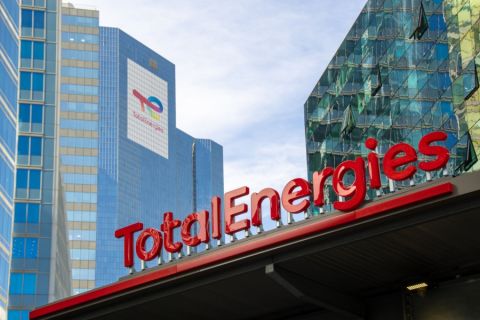Presented by:

Editor's note: This video appears in the new E&P newsletter. Subscribe to the E&P newsletter here.
As the pressure to fight climate change intensifies, the number of oil and gas businesses pledging to achieve net-zero emissions by 2050 continues to grow. But is a net-zero pledge enough to fight climate change?
At the current pace, reaching the Paris Agreement goals seems unachievable, said Martha Ramos-Gamoz, DNV's low carbon lead of Energy Systems, North America.
“DNV’s forecast shows there is a significant increase in renewable electricity and power system and a massive uptick in electric vehicles. However, the energy system will be more hydrocarbon-based by 2050,” she said. "Technologies and solutions to decarbonize exist and are proven such as hydrogen and carbon capture, but the implementation has not been as fast as it should be. Only a handful of solutions have been implemented at scale.”
Joshua Haugan, Aggreko's sector manager of Oil & Gas, said changes don’t happen overnight, even though their customers are making massive investments in net-zero initiatives.
“The industry understands the need and is navigating ways to achieve ESG targets,” he said.
Haugan noted that in recent research by Aggreko, which interviewed 200 energy professionals across a range of different industries, a resounding 96% of respondents said their company’s environmental impact was a medium to high priority while green issues were also found to be more important than price.
Despite this recognition, he said, “The notion of progress is soon cast into doubt when 85% still identified diesel as their fuel of choice for powering onsite equipment.”
“Findings like these show a disconnect between goals and action,” he continued. “Businesses are searching for ways to bring emissions down, prioritizing greener options wherever possible, yet there also appears to be difficulty in the uptick of alternative energy sources.”
Discussing the challenges to achieve net-zero goals, Antoine Halff, chief analyst and co-founder with Kayrros, said one of the biggest challenges of governments is to align long-term objectives of fighting climate change with the oil and gas industry’s efforts to deliver meaningful reductions in emissions in the short term.
He added that governments also need to accelerate the adoption of technologies like carbon capture and increase focus on reducing methane emissions, which are the second largest cause of global warming after CO2.
Jump to a topic:
How realistic is the net-zero goal? (0:44)
Progress toward the goal (4:54)
IEA’s report findings (10:30)
Challenges on the path to a net-zero future (13:00)
New technologies for decarbonization (17:21)
RELATED CONTENT:
How Carbon Capture Technologies Work and Why They Just Might Save Your Assets
Recommended Reading
Deep Well Services, CNX Launch JV AutoSep Technologies
2024-04-25 - AutoSep Technologies, a joint venture between Deep Well Services and CNX Resources, will provide automated conventional flowback operations to the oil and gas industry.
EQT Sees Clear Path to $5B in Potential Divestments
2024-04-24 - EQT Corp. executives said that an April deal with Equinor has been a catalyst for talks with potential buyers as the company looks to shed debt for its Equitrans Midstream acquisition.
Matador Hoards Dry Powder for Potential M&A, Adds Delaware Acreage
2024-04-24 - Delaware-focused E&P Matador Resources is growing oil production, expanding midstream capacity, keeping debt low and hunting for M&A opportunities.
TotalEnergies, Vanguard Renewables Form RNG JV in US
2024-04-24 - Total Energies and Vanguard Renewable’s equally owned joint venture initially aims to advance 10 RNG projects into construction during the next 12 months.
Ithaca Energy to Buy Eni's UK Assets in $938MM North Sea Deal
2024-04-23 - Eni, one of Italy's biggest energy companies, will transfer its U.K. business in exchange for 38.5% of Ithaca's share capital, while the existing Ithaca Energy shareholders will own the remaining 61.5% of the combined group.




